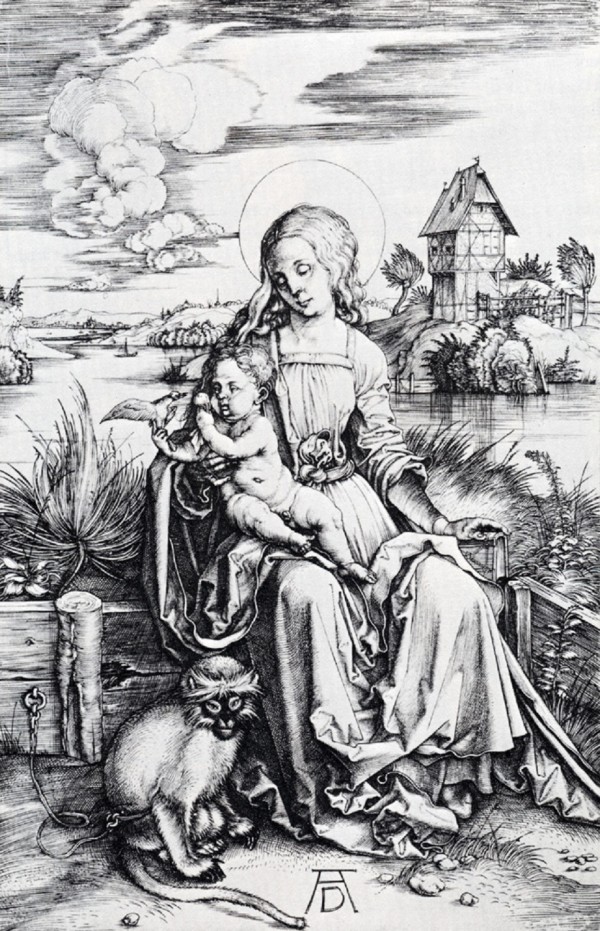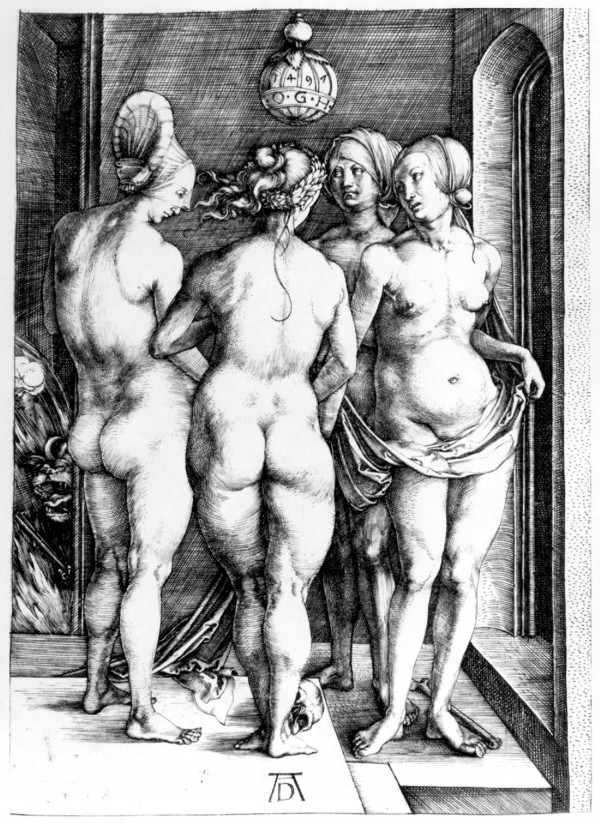
“Dürer’s Women: Images of Devotion & Desire” at Cleveland Museum of Art
Every once in a while you stumble upon an unexpected delight, like going just for fun to the Cleveland Museum of Art and discovering that there is a large exhibit of 16th–century German artist Albrecht Dürer’s woodcuts and engravings. When we went, we thought we definitely wanted to check the display out before leaving. As luck would have it, we accidentally walked right to it – making “Dürer’s Women: Image of Devotion & Desire” the first stop along the way.
The exhibit takes up two rooms in the Prints and Drawings Gallery in the South Building behind the information desk as you walk through the main entrance. One room is devoted to featuring images of the “Life of the Virgin” woodcut series. In the room on the left hand side are woodcuts and engravings of a more secular nature – depicting women in positions of power and authority, of reckless abandon with dance and seduction, and as wielders of revenge and retribution.
The display features over 50 impressions of CMA’s extensive collection of Dürer’s work. They also represent several years in the life of the artist, for Dürer worked on the Madonna series for quite some time. As you wander through this collection you can see the changes in artistic direction that he took, but also notice that he kept certain stylistic elements to give unity to the images that he apparently had planned to publish as a book.
As CMA notes in didactics that accompany the images, Dürer’s representation of the Virgin underlines her devotion to God and exemplifies his vision that the Madonna is the embodiment of unconditional love and the personification of motherhood.
Artistically what was fascinating is how much the woodcuts seemed to have a distinct three-dimensional look to them. Having mostly seen mass-produced prints of his works, the early impressions that CMA has provide a much more vivid and startling insight to Dürer’s work. Certainly he, as CMA describes, is unequaled in his artistic and technical execution of woodcuts and engravings. Something else the viewer will notice is the distinction between the woodcuts and engravings, again something one doesn’t see in mass-produced takes on the pieces.
In contrast, the female protagonists of Dürer’s nonreligious prints illustrate the numerous perceived dangers associated with women during the early 16th century. Allegorical and mythological representations of goddesses such as Venus and his famous work “Nemesis” convey temptation, retribution and power over men’s fates, while images of abduction and violence, possible witchcraft, dangerous liaisons and the understated authority of common women reveal Dürer’s understanding of feminine power.
Albrecht Durer, “Four Naked Women.” Photo from wikiart.org
There’s an image of a local older woman listening to a spiel from an egg seller. You just know she’s going to get the better of any deal that may happen in the exchange between the young man and herself.
Dürer’s works apparently have not had a larger showing for some 15 or so years. It may be that long before they come around again, so if someone wants to get a good look at this large and wonderful collection at CMA, now would be the time to make the half hour drive northward.
Besides the large collection in the “Life of the Virgin” woodcut series, there are some of Dürer’s more famous pieces, like the engraving “Adam and Eve” and “Melencolia.”
Albrecht Dürer’s “Dürer’s Women: Image of Devotion & Desire” will be on display 10 a.m.-3 p.m. Tuesday, Thursday, Saturday and Sunday, and 10 a.m.-9 p.m. Wednesday and Friday, through September 28 at the Cleveland Museum of Art, 11150 East Blvd., Cleveland; 216-42-7350; www.clevelandart.org. Admission is free.
Recent Content
-
Artsarticle ·
-
Artsarticle ·
-
Artsarticle ·

